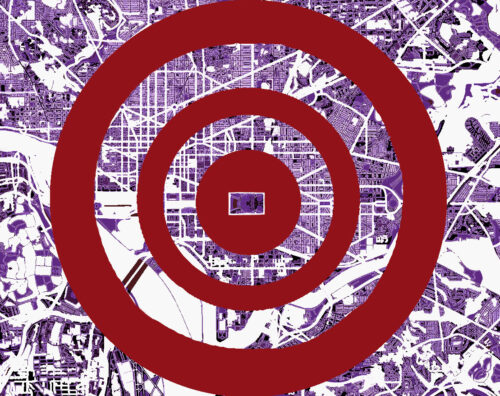Like most, January 6th began with sunshine. The city often experiences winter differently than most places— it feels like the swamp underneath the city radiates heat and the cool of winter gets wrapped up in its blanket of humidity. I was there on that day to feel it. In the sun, it felt easy to enjoy company outdoors. Old friends gathered to enjoy a pizza from our favorite local spot. Conversations were loud and funny and reminded me of what it was like to be fifteen years old. Back then, the capital of the United States of America was our playground.
When we were even younger, we were taught rules about where we couldn’t go in our city. There were important people in important buildings where no one could go. There were secret services officers we learned to notice who lurked around the White House lawn and ushered people away past the point where the space was public. We knew that half of DC was built on federal land where the laws were different than those of the District. We knew our city was just a city and that we never belonged to a state.
DC is lovely on a regular pandemic day. Bike paths wind down long streets and masked pedestrians can be seen enjoying oddly warm winter days. Clear skies peek out between buildings. Long avenues running north to south begin their route in the innermost point of the diamond-shaped city. They meet smaller streets and roads that spiral outwards with sacred symmetry. From the highest point in the city, the grid system of the streets becomes clear: all roads in DC lead to the Capitol building at its center.
The sounds of sirens are regular in our city where motorcades carry high profile politicians and police cars racing down streets echo into every day and night. Their sounds pierce through humid DC air to interrupt sentences and thoughts. That day, we noticed planes and helicopters joining the chorus. And it got louder. Smiling faces turned upside down to accommodate raised eyebrows and tight throats. There was something wrong. Something going on. Something caused the sounds of the city to drown out the words that came from our mouths and the plans we had for the day yet to come.
Someone had broken into the Capitol building and the pulse of the city started to speed up. From where we sat, it was like we could feel the building at our city’s center start to shake and rock. Like a heart attack. Cardiac arrest. Roads flowing outward from the heart to the limbs of the city were stopped and the people in the city stood still. We were paralyzed.
The sounds of sirens only grew louder and the helicopters above came lower. We could hear them rushing down long avenues towards the heart of the city where the building faced a mass in red. Sirens drowned out the sounds of the crowd forcing barriers to crumble.
The day faded to black and with each passing hour, the city waited to be freed. In its broken state, large military trucks, vans, and buses carried armed soldiers to our defense— or our entrapment? Barbed wire stood between people and their places: fences to protect and hold the Capitol building in its space. Then, the streets of the city were tense and silent. Strong silence and empty roads and soldiers and sirens and fences and fear. It was hard to remember what the view was like on a beautiful clear day.
There was fear and there was hope. There were kind words shared under masked faces as people passed each other by. Homes and buildings where people lived were decorated with signs celebrating care and justice. There were sunny days where even through barricades, buildings downtown glittered in the spots where the sun hit hardest.
Trees that stayed alive through the winter painted the skyline with their shades of green to match the brilliant blue background of daytime. The city wept and slept and healed and waited: streets and roads faced the nervous silence of anticipation. Freedom remained in question.
Abigail Koerner ’21 (ajkoerner@college.harvard.edu) writes short stories for the Indy.

